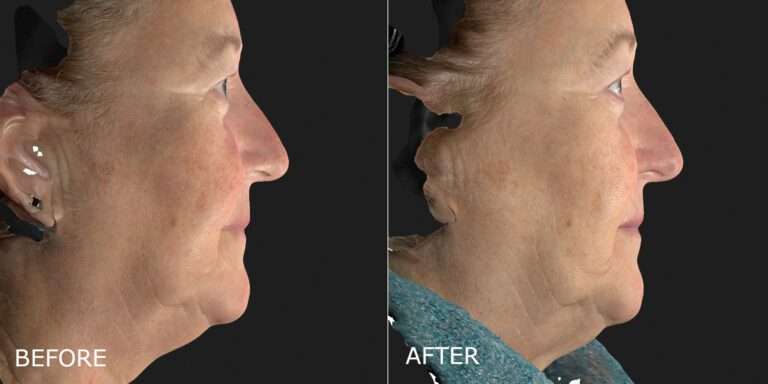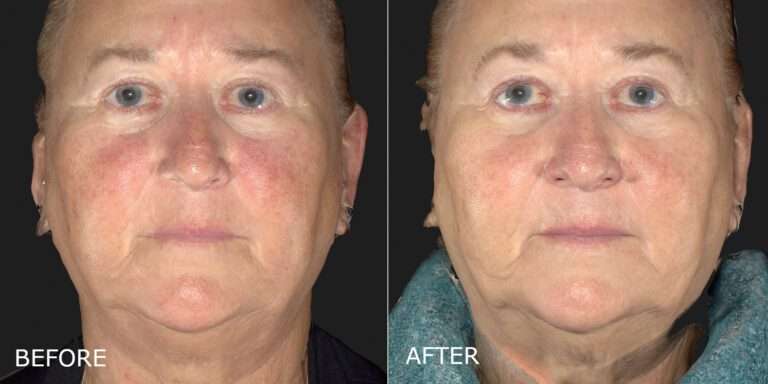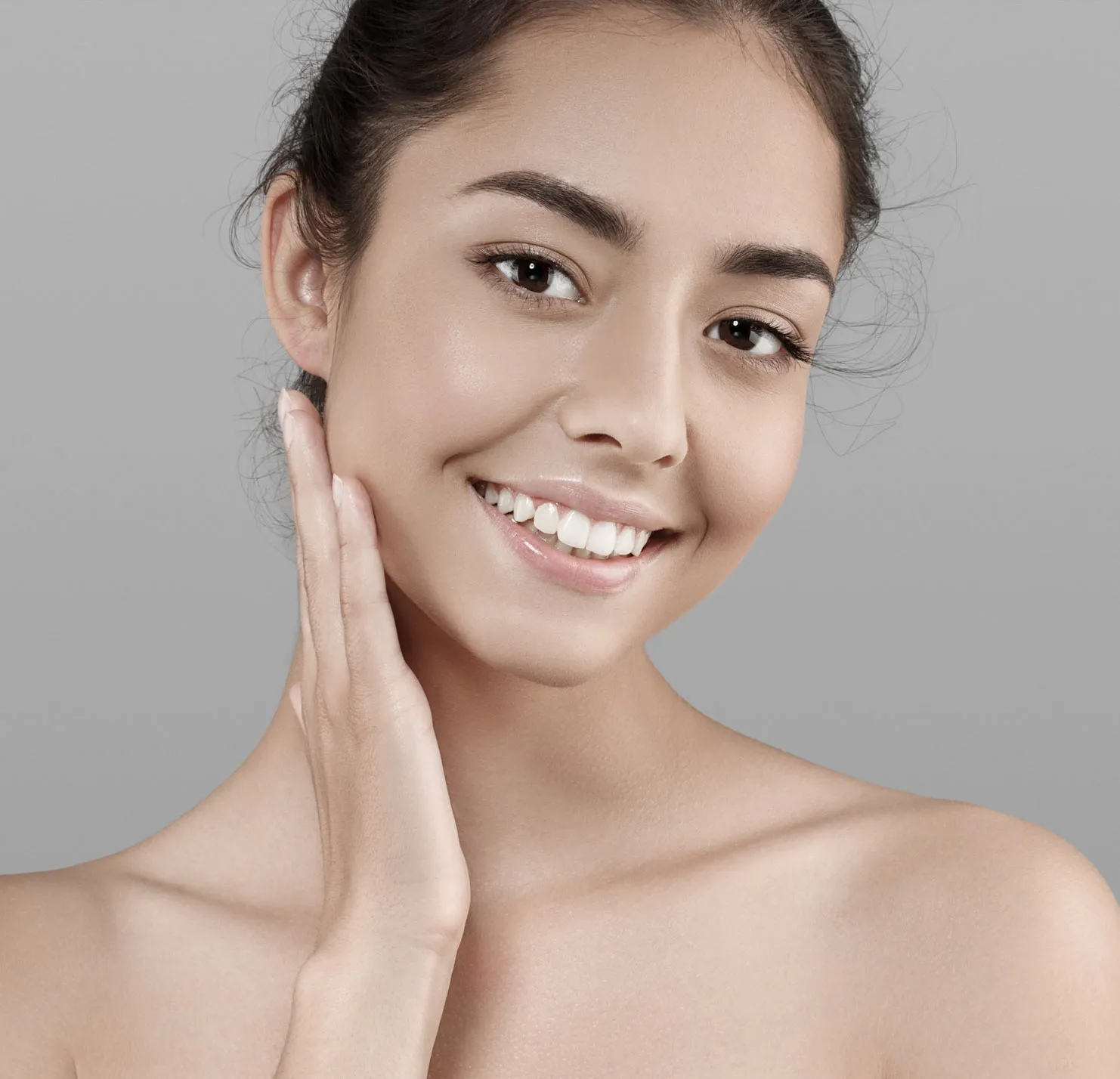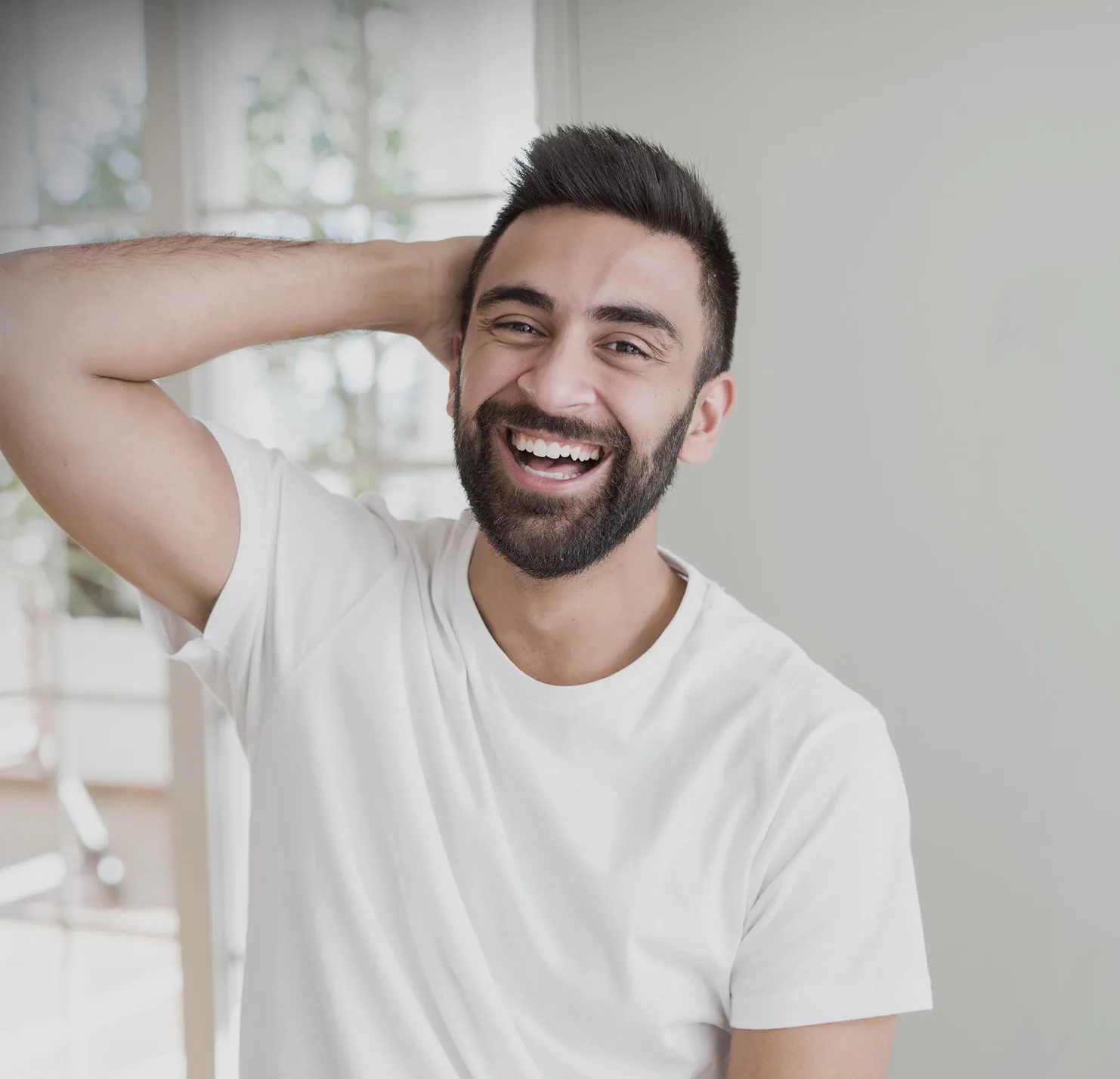
Conveniently located to serve Kelowna, BC.
Treatment Options
Rosacea Treatment
After treatment, most patients have skin that feels and looks better. Inflammation will be decreased as will the number of sores.

Conveniently located to serve Kelowna, BC.
After treatment, most patients have skin that feels and looks better. Inflammation will be decreased as will the number of sores.





Just like skin, results may vary. These pictures (of our awesome, real-life clients!) help you see what is possible and set a realistic expectation.
We’d love to get to know you, learn more about your goals, and see what treatment options would suit you best.
Unless you are a blushing bride, constant facial redness is not all that desirable in most situations. Some of our patients even have random strangers giving them advice about drinking less so they won’t look so flushed all the time – how rude! These patients don’t even drink! Beyond the cosmetic appearance, chronic facial redness can lead to more permanent skin changes over many years such as acne-like pimples, dry, sensitive skin, dry eyes, enlarged nose and much more. Treating rosacea is a must for anyone experiencing these symptoms to prevent any long-term damage to the skin.
Rosacea is a chronic skin condition that causes inflammation in a person’s face. The most commonly affected areas are the cheeks, nose, chin, forehead, and eyelids. Symptoms include redness, spider veins, red blood vessels, swelling, and sores similar to acne.
Rosacea is a serious and long-term chronic condition. You should go to your doctor for a diagnosis and treatment plan. In serious cases, it can cause blindness.
Rosacea is more common in fair-skinned individuals, and in particular those with Northern European ancestry. Those who blush easily are more at risk. It is more common in women than men. Those between the ages of 30 and 50 are at an elevated risk.
For rosacea treatment in Kelowna, Dr. Crippen at the DermMedica clinic is certified by the American Board of Laser Surgery to perform cosmetic laser procedures. He is experienced in rosacea treatments.
Laser treatment can be very effective in treating rosacea. It helps to reduce the density and quantity of blood vessels in the outermost layers of skin. After treatment, most patients have skin that feels and looks better. Inflammation will be decreased as will the number of sores. Many patients return to Dr. Crippen on a regular basis to maintain their skin treatment.
The most common symptom of rosacea is redness of the face. It can occur in certain areas or over the whole face. This redness can have a significant negative effect on individuals. Other conditions and sunburns can cause facial redness. As a result, it is important to visit a doctor to receive a diagnosis.
Other symptoms include:
Rosacea is a chronic condition for which there is no cure. However, it can be treated and monitored. Avoiding triggers is one of the keys.
These include:
The Erythemato-Telangiectatic subtype presents as redness and visible blood vessels on the cheeks, forehead, nose, or the face in general. Individuals with this type will be intolerant of most skin medicines and cosmetics. It is treated by avoiding things that trigger blushing, use of sunscreen, photoprotection, and laser therapies. The laser treatments target the redness and blood vessels. Lasers used in these treatments include pulsed dye laser, KTP laser, and Nd-YAG laser. The type of laser used depends on the nature of the blood vessels.
The second subtype has symptoms including papules and pustules. Facial redness is concentrated on the nose, cheeks and forehead. Antibiotics and topical treatments are used for this kind. Medications used include azelaic acid, doxycycline, metronidazole, minocycline and tetracycline. Accutane is used in severe cases that don’t respond to other medications. Laser therapy is quite effective on this type. It helps to reduce the frequency of Rosacea and heals papules.
The third type has symptoms including thicker skin and strange skin texture. Swelling or enlargement may happen in the oil glands, connective tissue, and veins in the nose. The chin, ears, forehead, and eyelids may also be affected. This subtype presents almost exclusively in men. It is severe and requires antibiotics, laser treatment, or surgery. The CO2 laser is best for this subtype
The fourth subtype doesn’t always include skin symptoms. Usually the blood vessels in the eye are red and visible. Other symptoms include swollen eyelids, the feeling of a foreign object in the eye and inflammation of the eyelid glands. It is treated with antibiotics and by making sure to keep the eyes clean.

We will help you eliminate redness and blood vessels on your face or other body parts so that you can live more confidently with our VBeam laser.
The VBeam laser (also sometimes known as a vascular laser) is a pulsed dye laser. This means that the light energy is delivered in a series of pulses to reduce red marks and treat dilated blood vessels. The VBeam laser treatment works on multiple areas of the body and it is effective for many different skin conditions, both medical and cosmetic in nature.
This vascular laser specifically targets the blood vessels to damage them permanently so the body removes them over a few days to weeks with little to no peripheral damage.
PROCEDURE TIME: 15-30 minutes
RECOVERY TIME: 0-2 days usually
LASTS: Permanent, however new blood vessels usually grow back over time
TECHNIQUE: Laser treatment on surface of skin
PAIN LEVEL: Minimal to moderate depending on area and patient
RESULTS: In 1-5 days results are usually apparent
ANESTHESIA: Topical cream for some patients is recommended
WHY CHOOSE US?: Dr. Crippen is certified by the ABLS and ASLMS in laser procedures





3477 Lakeshore Rd #200, Kelowna, BC V1W 0A7, Canada